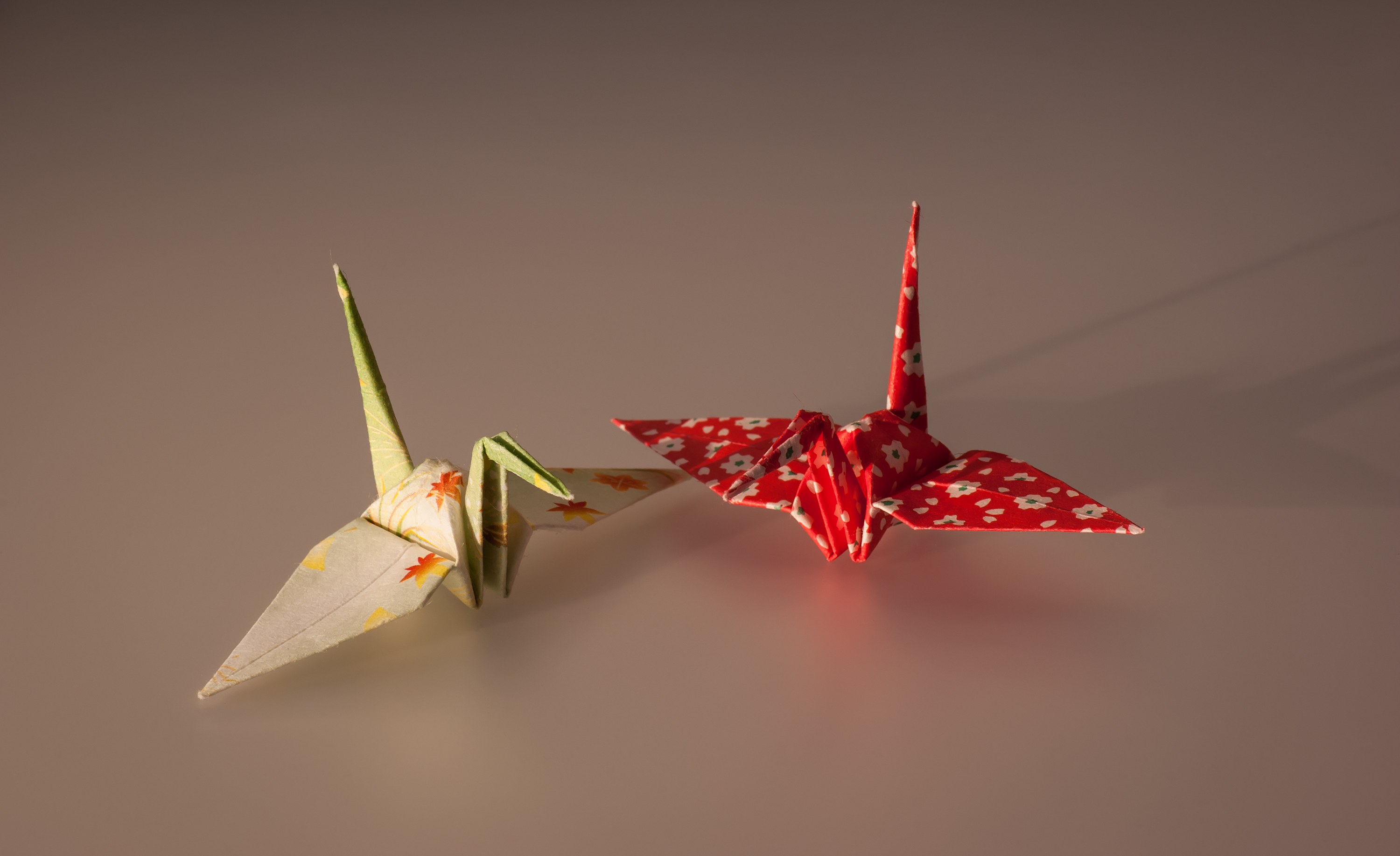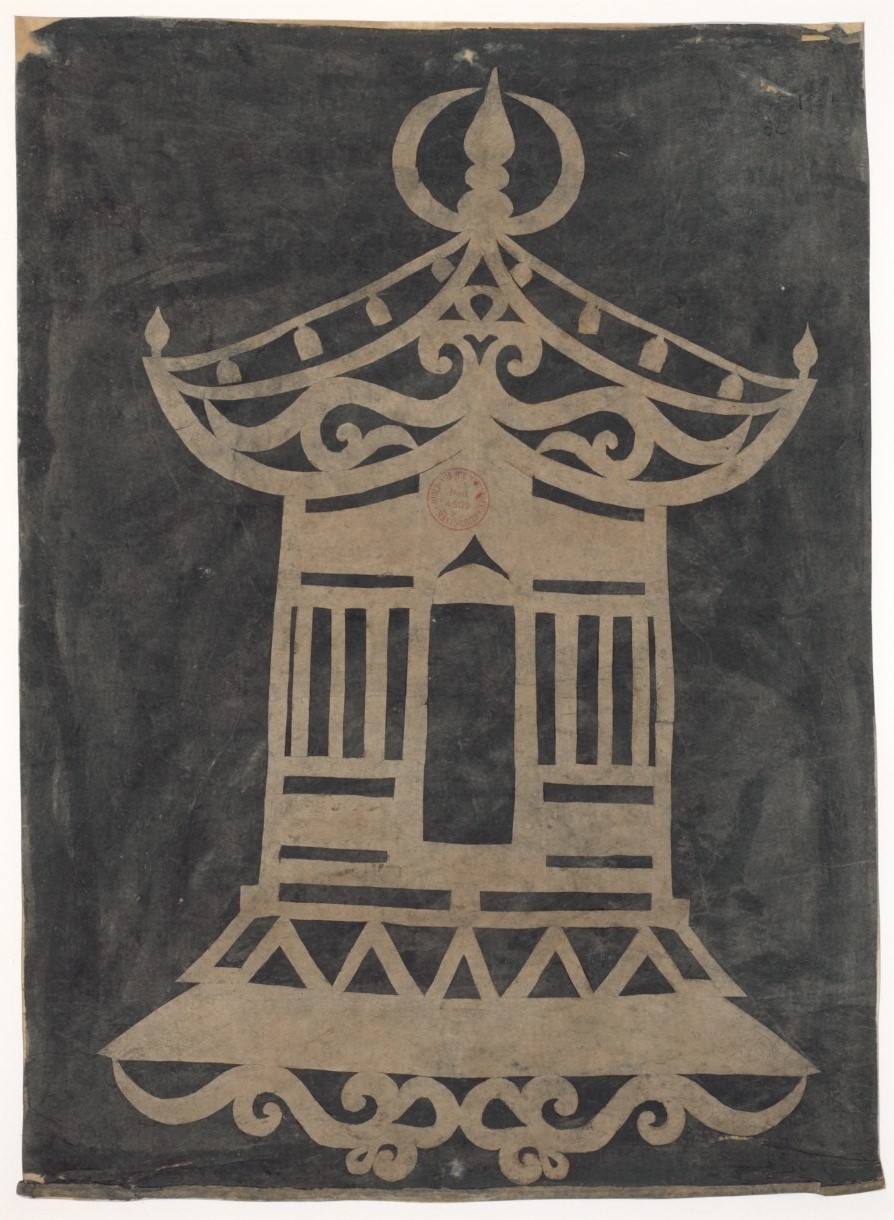|
Kirigami
is a variation of origami, the Japanese art of folding paper. In , the paper is cut as well as being folded, resulting in a three-dimensional design that stands away from the page. typically does not use glue. Overview In the United States, the term was coined by Florence Temko from Japanese , , and , , in the title of her 1962 book, '', the Creative Art of Paper cutting''. The book achieved enough success that the word was accepted as the Western name for the art of paper cutting. Typically, starts with a folded base, which is then unfolded; cuts are then opened and flattened to make the finished design. Simple are usually symmetrical, such as snowflakes, pentagrams, or orchid Orchids are plants that belong to the family Orchidaceae (), a diverse and widespread group of flowering plants with blooms that are often colourful and fragrant. Orchids are cosmopolitan plants that are found in almost every habitat on Eart ... blossoms. A difference between and the ar ... [...More Info...] [...Related Items...] OR: [Wikipedia] [Google] [Baidu] |
Origamic Architecture
Origamic architecture is a form of kirigami that involves the three-dimensional reproduction of architecture and monuments, on various scales, using cut-out and folded paper, usually thin paperboard. Visually, these creations are comparable to intricate 'pop-ups', indeed, some works are deliberately engineered to possess 'pop-up'-like properties. However, origamic architecture tends to be cut out of a single sheet of paper, whereas most pop-ups involve two or more. To create the three-dimensional image out of the two-dimensional surface requires skill akin to that of an architect. Origin The development of origamic architecture began with Professor Masahiro Chatani's (then a newly appointed professor at the Tokyo Institute of Technology) experiments with designing original and unique greeting cards. Japanese culture encourages the giving and receiving of cards for various special occasions and holidays, particularly the Japanese New Year, and according to his own account, Profe ... [...More Info...] [...Related Items...] OR: [Wikipedia] [Google] [Baidu] |
Florence Temko
Florence Maria Temko (October 20, 1921 – November 12, 2009), a pioneer in spreading origami in the United States, was perhaps the most prolific author on this subject. With fifty-five books to her credit on paper arts and folk crafts, she was a strong influence on interested beginners in the art of paperfolding. Some of them later developed complex origami designs previously unimaginable and applied their expertise into advanced innovations in the fields of art and science. Early life She was born Florence Maria Marx, in London, the daughter of Erich and Erna Marx. She studied at Wycombe Abbey, St. George's Business College and the London School of Economics, but her education was interrupted by World War II. She also studied at the New School for Social Research in New York. Personal life She met US Army Sergeant Leonard Temko, and they married in 1945. In 1946, they settled in New Jersey and had three children: Joan A Temko, and twins Stephen Temko and Ronald Temko. They div ... [...More Info...] [...Related Items...] OR: [Wikipedia] [Google] [Baidu] |
Origami
) is the Japanese art of paper folding. In modern usage, the word "origami" is often used as an inclusive term for all folding practices, regardless of their culture of origin. The goal is to transform a flat square sheet of paper into a finished sculpture through folding and sculpting techniques. Modern origami practitioners generally discourage the use of cuts, glue, or markings on the paper. Origami folders often use the Japanese word ' to refer to designs which use cuts. In the detailed Japanese classification, origami is divided into stylized ceremonial origami (儀礼折り紙, ''girei origami'') and recreational origami (遊戯折り紙, ''yūgi origami''), and only recreational origami is generally recognized as origami. In Japan, ceremonial origami is generally called "origata" ( :ja:折形) to distinguish it from recreational origami. The term "origata" is one of the old terms for origami. The small number of basic origami folds can be combined in a variety of ... [...More Info...] [...Related Items...] OR: [Wikipedia] [Google] [Baidu] |
Paper Model
Paper models, also called card models or papercraft, are models constructed mainly from sheets of heavy paper, paperboard, card stock, or foam. Details This may be considered a broad category that contains origami and card modeling. Origami is the process of making a paper model by folding a single piece of paper without using glue or cutting while the variation kirigami does. Card modeling is making scale models from sheets of cardstock on which the parts were printed, usually in full color. These pieces would be cut out, folded, scored, and glued together. Papercraft is the art of combining these model types to build complex creations such as wearable suits of armor, life-size characters, and accurate weapon models. Sometimes the model pieces can be punched out. More frequently the printed parts must be cut out. Edges may be scored to aid folding. The parts are usually glued together with polyvinyl acetate glue ("white glue", "PVA"). In this kind of modeling, the section ... [...More Info...] [...Related Items...] OR: [Wikipedia] [Google] [Baidu] |
Paper Cutting
Papercutting or paper cutting is the art of paper designs that has evolved all over the world to adapt to different cultural styles. One traditional distinction most styles share is that the designs are cut from a single sheet of paper as opposed to multiple adjoining sheets as in collage. History Paper-cut art appeared during the Jin dynasty in 4th century AD, after the Chinese official Cai Lun invented paper in 105 AD. The oldest surviving paper cutout is a symmetrical circle from the 6th-century Six Dynasties period, found in Xinjiang, China.Needham, Joseph. Chemistry and Chemical Technology. 974(1974). Cambridge University Press. Papercutting continued to be practiced during the Song and Tang dynasties as a popular form of decorative art. By the eighth or ninth century papercutting appeared in West Asia, in Europe it appeared after the 13th century–even as late as the 16th century (with Swiss and German scherenschnitte silhouette.html" ;"title="ee also silhouet ... [...More Info...] [...Related Items...] OR: [Wikipedia] [Google] [Baidu] |
Nahoko Kojima
(born 2 October 1981) is a contemporary Japanese paper cut artist. She started Kirie (Japanese Papercutting) under private tutelage at the age of five and continued throughout her formative years. In 1999 she moved to Tokyo and in 2004 she graduated from a degree in design at Kuwasawa Institute. An avid follower of fashion and trends, she found much of her inspiration in the city. She briefly pursued a career in graphic design in Tokyo before moving to London in 2005 to learn more of the Western culture of the arts. Her first solo Paper Cut show in London exhibited the five senses collection at the Epicurean Lounge in 2007. By 2009 she was cutting professionally, filling the Exposure Gallery in Central London with over 100 paper cuts some from her time in Tokyo with the majority cut in London. In 2010, Kojima opened her studio in Central London and started working on multiple works including the Majestic Birds, Kiku Flowers Collection, the full colour Alice Collection, based o ... [...More Info...] [...Related Items...] OR: [Wikipedia] [Google] [Baidu] |
Fold-and-cut Theorem
The fold-and-cut theorem states that any shape with straight sides can be cut from a single (idealized) sheet of paper by folding it flat and making a single straight complete cut. Such shapes include polygons, which may be concave, shapes with holes, and collections of such shapes (i.e. the regions need not be connected space, connected). The corresponding problem that the theorem solves is known as the fold-and-cut problem, which asks what shapes can be obtained by the so-called fold-and-cut method. A particular instance of the problem, which asks how a particular shape can be obtained by the fold-and-cut method, is known as ''a'' fold-and-cut problem. History The earliest known description of a fold-and-cut problem appears in ''Wakoku Chiyekurabe'' (Mathematical Contests), a book that was published in 1721 by Kan Chu Sen in Japan. An 1873 article in ''Harper's New Monthly Magazine'' describes how Betsy Ross may have proposed that stars on the American flag have five poin ... [...More Info...] [...Related Items...] OR: [Wikipedia] [Google] [Baidu] |
History Of Origami
The history of origami followed after the invention of paper and was a result of paper's use in society. In the detailed Japanese classification, origami is divided into stylized ceremonial origami (儀礼折り紙, ''girei origami'') and recreational origami (遊戯折り紙, ''yūgi origami''), and only recreational origami is generally recognized as origami. However, this page describes the history of both ceremonial and recreational origami. The modern growth of interest in origami dates to the design in 1954 by Akira Yoshizawa of a notation to indicate how to fold origami models. The Yoshizawa-Randlett system is now used internationally. Today the popularity of origami has given rise to origami societies such as the British Origami Society and OrigamiUSA. The first known origami social group was founded in Zaragoza, Spain during the 1940s. Traditional designs Ceremonial origami (origata) By the 7th century, paper had been introduced to Japan from China via the Korean P ... [...More Info...] [...Related Items...] OR: [Wikipedia] [Google] [Baidu] |
Pentagram
A pentagram (sometimes known as a pentalpha, pentangle, or star pentagon) is a regular five-pointed star polygon, formed from the diagonal line segments of a convex (or simple, or non-self-intersecting) regular pentagon. Drawing a circle around the five points creates a similar symbol referred to as the pentacle, which is used widely by Wiccans and in paganism, or as a sign of life and connections. The word ''pentagram'' comes from the Greek language, Greek word πεντάγραμμον (''pentagrammon''), from πέντε (''pente''), "five" + γραμμή (''grammē''), "line". The word pentagram refers to just the star and the word pentacle refers to the star within a circle, although there is some overlap in usage. The word ''pentalpha'' is a 17th-century revival of a post-classical Greek name of the shape. History Early history Early pentagrams have been found on Sumerian pottery from Ur c. 3500 Common Era, BCE, and the five-pointed star was at various times the symbol of ... [...More Info...] [...Related Items...] OR: [Wikipedia] [Google] [Baidu] |
Orchid
Orchids are plants that belong to the family Orchidaceae (), a diverse and widespread group of flowering plants with blooms that are often colourful and fragrant. Orchids are cosmopolitan plants that are found in almost every habitat on Earth except glaciers. The world's richest diversity of orchid genera and species is in the tropics. Orchidaceae is one of the two largest families of flowering plants, the other being the Asteraceae. It contains about 28,000 currently accepted species in 702 genera. The Orchidaceae family encompasses about 6–11% of all species of seed plants. The largest genera are '' Bulbophyllum'' (2,000 species), '' Epidendrum'' (1,500 species), '' Dendrobium'' (1,400 species) and '' Pleurothallis'' (1,000 species). It also includes '' Vanilla'' (the genus of the vanilla plant), the type genus '' Orchis'', and many commonly cultivated plants such as '' Phalaenopsis'' and '' Cattleya''. Moreover, since the introduction of tropical species into cu ... [...More Info...] [...Related Items...] OR: [Wikipedia] [Google] [Baidu] |





